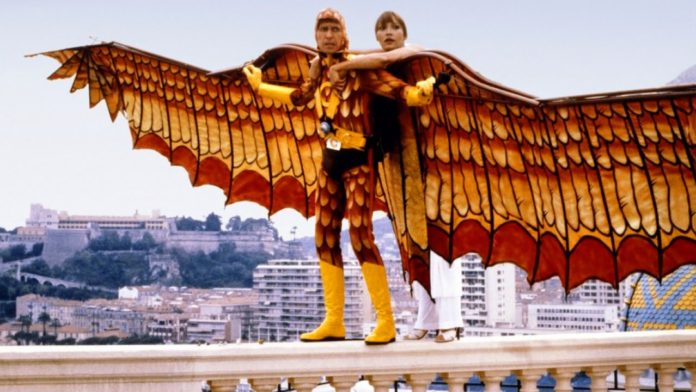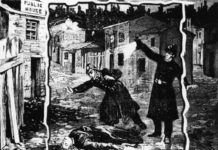Hoisted by their own Petard. Short stories of inventors who were killed by their creations or quest for discovery.
Some of these ideas were immediately abandoned, and it is easy to see why. Others, however, are still in everyday use.
The Cure for Cancer
Marie Curie (1867-1934) is quite possibly the most famous woman in the history of science. During her lifetime she received numerous awards, including the Nobel Prize for Physics (1903) and the same honour for Chemistry in 1911, the first scientist (male or female) to ever achieve such an honour.
Curie went on to receive many more, even after her death. Born in Warsaw, Poland, Marie Sklodowska studied at the Sorbonne in Paris where her lack of funding, and diet of bread and tea, led to regular health problems. Although she did manage to complete her master’s degree in physics in 1893 and earned a commission to study various metals and identify their magnetic properties.
And this is where her fortune changed because, in need of a place to work, a friend introduced the young Polak to French Physicist Pierre Curie, a scientist with a growing reputation and, more importantly, access to a laboratory. The pair were soon romantically linked and had formed a formidable scientific partnership.
Before long Marie Curie was experimenting with uranium rays after studying the work of Henri Becquerel and Wilhelm Roentgen (see X-Rays) coining the word ‘radioactivity’ in the process and her new husband had soon suspended his own research to join his wife’s experiments.
By 1898 the couple had identified a new radioactive element that they called Polonium, in honour of Marie’s homeland. In 1903 Pierre’s life was cut tragically short when he stepped in front of a horse drawn carriage in Paris and suffered a fatal fractured skull. Heartbroken, Marie continued obsessively with her research.
During the First World War she actively promoted the use of portable X-Ray machines, which became affectionately known as ‘Little Curies,’ and she was well known for carrying test tubes full of uranium around in her lab coat pocket.
This habit, and her devotion to science, would ultimately lead to tragedy when, in 1934, she was admitted to the Sancellemoz Sanatorium in Passy, France where she died on July 4 of aplastic anemia, (Leukaemia) caused by prolonged exposure to radiation.
It was Marie Curie’s ground-breaking work that led to the successful use of radiotherapy in the treatment of cancer during the 20th century.
Advanced Gun Ships
Cowper Phipps Coles (1819-1870) was both a British naval captain and inventor. At the age only eleven years old, in 1830, he joined the Royal Navy and served with distinction throughout many military campaigns, not least at the Siege of Sevastopol of 1855 during the Crimean War against Russia.
By the following year Coles had been promoted to commander of the paddle sloop HMS Stromboli which patrolled the Black Sea until the end of the conflict. During this time Coles and a few other officers designed and built a fifteen meter raft out of empty barrels, which they christened Lady Nancy, and lashed a thirty-two pounder cannon to her deck.
With this vessel Commander Coles was able to manoeuvre the gun into shallow waters and attack the Russian supply stores at Tagarog, a task previously impossible with their own deep water ships.
The action made a hero of Coles and he began to experiment with other designs for military technology which impressed the Admiral of the Fleet enough to send him to London and explain his ideas to the powers that be in Greenwich. Coles’ inventive plans were well received although the war ended before any of them could be put into use.
Undeterred, Cowper Phipps Coles, by then a full Captain, began designing Turret ships which included a revolving platform upon which guns could be set and then quickly aimed in any direction, a marked improvement on the previous ships of the day that had to slowly turn on the wind until their guns faced the target. Coles’ rotating gun platforms were definitely the future of gun ships and his patent was filed on 10 March 1859.
His designs received enthusiastic support, not least from Prince Albert who encouraged the Admiralty to build the first Turret Ship in 1862. However, Coles was only permitted to design the turret and the ship upon which it sat was left to the chief navy engineer Isaac Watts.
Coles then improved his design and proposed other ships that he was eager to build himself but he was repeatedly denied the opportunity.
Eventually, and after growing public support, Coles was approved to build his latest design, although the Admiralty Board was divided in their decision, they voted to approve and fund the project with Coles supervising construction. In fact, the Board was so divided that the project was not officially ‘approved,’ and stamped ‘not objected to’ instead.
Construction of the HMS Captain began in 1867 and, despite the Navy’s new Chief Constructor, Edward Reed’s, official concerns over her seaworthiness, successful trials were completed in January 1870. Reed, however, remained unconvinced and eventually resigned over the dispute in July of the same year.
Coles, on the other hand, was vindicated when his new ship was officially launched the following month with its inventor on board. However, another month later, as she sailed in the open sea the weather deteriorated, a gale blew up and the hurricane decks, above the turrets, caught the wind. The HMS Captain capsized as she turned about. Coles and nearly five hundred English seamen went down with her and were lost to the sea.
The Original Spaceman
Wan Hu was a Chinese official of the Ming Dynasty during the 16th century who has passed into legend for attempting to become the first man to reach outer space. Hu’s ambitious plan was to employ China’s advanced gunpowder based firework technology to build rockets that would lift a chair into the above and beyond with apparent ease.
What his plans were for returning safely to earth remain unknown. When his testing was complete, and his big day arrived, Wan Hu had forty-seven of the most powerful rockets attached to a grand chair and, wearing his most regal outfit, the inventor climbed aboard and prepared for lift-off.
Forty-seven faithful servants then lit each of the fuses and scurried for cover. Peering from behind a wall they later reported a huge explosion and, once the smoke had cleared, no trace of the fearless inventor, or his chair, could be found. Nothing was ever heard of him again and, in his honour, one of the craters on the dark side of the moon is named the Wan Hoo Crater.
Some faithfully believed that was his actual landing spot. Others, on the other hand, are perhaps more realistic with their conclusion.
It’s All In the Blood
Alexander Bogdanov (1873-1928) was a controversial figure and an old Bolshevik who had resigned from the party long before the Russian Revolution, but had made a comrade of Vladimir Lenin who continued to respect him as a scientist.
He also valued his opinion. He had been a rival to Lenin during the first decade of the 20th century but eventually came to support him. Lenin, for his part, agreed to forgive Bogdanov as long as he stayed out of politics in the future and concentrated on science instead.
Bogdanov then spent the next twenty five years working as a physician, economist, scientist, teacher and inventor (among other things) and early enthusiast of cybernetics.
He also became the founder of the world’s first institution that devoted itself entirely to the research of what we now call blood transfusion. For the first decade, after leaving the Bolshevik’s, Bogdanov was constantly on the move. A marked man he was pursued by supporters of the Russian Tsar and had to adopt a variety of pseudonyms before, after the storming of the Winter Palace, returning to his original name.
In 1924 Bogdanov began experimenting with blood transfusions on himself in an attempt to stay young forever or, at least, achieve some sort of longevity. Lenin’s sister Maria Ulianova was one of those who volunteered to take part in these experiments and Bogdanov himself, after eleven successful transfusions, recorded that his eyesight had improved and his hair loss had decreased.
Other volunteers noted that Bogdanov appeared to be at least ten years younger after the transfusions. In 1925 he founded the Institute for Haematology and Blood Transfusions and continued his good work.
However, far from increasing his life span the science of blood transfusion was soon to cut it short as he, himself, took the blood for his twelfth transfusion from a student who was unknowingly suffering Tuberculosis and Malaria.
Bogdanov was soon infected and overcome with illness which killed him on 7 April 1928. Ironically, the infected student was given Bogdanov’s own blood as a replacement and he later made a full recovery.
The Flying Taxi
Michael Dacre was a man of vision. He understood the needs of modern society, especially in built up urban areas, and in 1998 he invented a flying taxi known as a Jetpod, which could take off and land in very short distances.
He thought that with top speeds of over three hundred and fifty mph it would be perfect for executive transport that currently relied on slower, and noisy, helicopters. Dacre claimed that his Jetpod would take passengers from Heathrow to the centre of London in under four minutes at a cost of only £50 and spoke of his park and fly concept with great enthusiasm. Dacre; ‘Jetpods are meant to be a workhorse.
A taxi cab in the air for on-demand free roaming traffic.’ He went on to explain they would have over-wings which would reduce noise and would be any city’s cheapest and fastest form of travel.
Dacre was clearly a latter day aviation pioneer and his invention drew an enthusiastic response. However, the plan failed to take off, so to speak. For on 16 August 2009 the fifty-three-year old inventor was preparing for his first test flight at the remote village of Taiping, one hundred and fifty miles north of the Malaysian capital, Kuala Lumpur.
A local villager, who was collecting shrimps from a nearby pond later described to the aviation authorities what he had witnessed; ‘I had seen it earlier going down the runway three times, but it couldn’t take off.
Then, on the fourth run, it got about two hundred meters into the air and then and shot vertically into the sky before veering off to the left and falling to the ground. The plane exploded into a ball of flames but the firemen, who were very quickly on the scene, managed to extinguish them.
Sadly, Michael Dacre had died on impact; killed by the invention he hoped would change city travel.
Underwater Travel
Horace Lawson Hunley (1823-1863) was born in Tennessee and raised in New Orleans, a good old southern boy. After studying law and then becoming a member of the Lousiana State Legislature, the American Civil War broke out and Hunley turned his attention to the invention of weapons that he hoped would help the Confederate Army prevail.
And in particular, he devoted himself to the technology of submarines. Working with designers Baxter Watson and James R McClintock, Hunley completed his first effort, called the Pioneer. However, New Orleans was soon to fall to the wrong army and Pioneer was scuttled to prevent its capture and its design features noted.
His second effort was built in Alabama but she sank on her maiden test run in Mobile Bay. But, Hunley was undeterred and, convinced his invention would be of major advantage to Confederate seamen, he started again with a third design.
This time he was forced to finance the project himself and his manually propelled design was successfully tested in the same Mobile Bay as his previous effort. Named in his honor, the H.L. Hunley was then secretly transported to Charleston Harbour in 1863 where it was commissioned to protect the town from an attack by sea.
On 15 October 1863 the Hunley’s skipper, Lieutenant Dixon was on leave and so her inventor decided to carry out a series of tests himself. And whilst diving into deeper water, in an attempt to navigate her beneath an anchored ship, Horace Hunley managed to bury her nose into deep mud at the bottom of the harbour.
Seven crew members drowned and Hunley himself, who was at one of the escape hatches, ended up suffocating before he could be rescued. It eventually took divers three days to reach the stricken Hunley and remove the bodies.
It Saved Thousands of Lives, but Killed its Inventor.
Henry Winstanley (1644-1703) was born in Saffron Walden, Essex, the son of a gamekeeper who would later take a position at Audley End House, the seat of the Earl of Suffolk. The younger Winstanley also worked at Audley End House, first as a porter and later as secretary as the home became a royal palace for the use of King Charles II whilst he was idling away his time at Newmarket, attending the horse racing.
Winstanley also took a keen interest in the practice of engraving and during his Grand Tour of Europe (1669-1674) he developed an enthusiasm for continental architecture. On his return he spent ten years creating a detailed set of architectural engravings that survive today as an important historic record of English manor house design.
He also designed a set of playing cards which proved to be very popular and sold handsomely. In 1679 he was appointed the Clerk of Works at Audley End House and became known, throughout society, for his ingenious mechanical and hydraulic designs and for his love of gadgets.
Indeed, he filled his own house at Littlebury with fascinating new designs that became known as the Essex House of Wonders, a popular tourist local landmark for well to do and curious travellers.
In 1690 Winstanley opened his Waterworks Theatre in London’s Piccadilly which proved to be instantly popular and produced a great deal of profit, much of which its owner invested in ships.
England, at the time, was becoming one of the greatest seafaring nations on earth and owning Galleon’s was considered the shrewd investment of its day. Ultimately Winstanley owned five although they were not without their risk.
One risk in particular, the Eddystone Reef, a series of rocks fourteen miles off the coast of Cornwall, had been busily claiming hundreds of trading ships at the cost of thousands of lives. Two of these ships were part of Winstanley’s own fleet and, after the second loss, he approached the Admiralty with an audacious plan to build a structure directly onto the rocks and erect a warning light at the top.
And he also persuaded the authorities in London that he was the man to build it. In 1696 Winstanley’s plans were approved and work began on July 14 of that year. He had, as it turned out, invented the modern lighthouse.
Although building it was not without its challenges as one morning, as the foundations were being completed, a French privateer ship destroyed the structure and kidnapped Winstanley, taking him off to France where he would be held to ransom.
This episode did not last long for, as soon as French King Louis XIV heard what had happened, he ordered Winstanley’s release and reminded his subjects; ‘We are at war with England, not with humanity.’
Winstanley returned to begin his project again although when it was completed, the designer was unimpressed with the wooden structure’s resilience to the first severe gale. And so he ordered it down and started again.
At the second attempt Henry Winstanley completed a solid, part-stone structure with a fine continental design complete with a luxury stateroom and living accommodation. Winstanley proudly announced to the world that his lighthouse could withstand any of the natural elements and that his biggest wish was to be ‘inside it during the greatest storm that ever was.’
Over the following five years there were to be no ships lost to the Eddystone Rocks and Winstanley’s invention was repeated at numerous locations around Great Britain. Sadly, Winstanley was soon to have his wishes come true for on December 7, 1703, one of the severest storms ever recorded descended upon the south of England.
In London over two thousand chimneys fell down and the roof was blown off Westminster Abbey. At the time Winstanley was safely in his lighthouse carrying out a survey when the high seas cut him off from land.
And so he hunkered down for the night, confident that his lighthouse would provide shelter. The following morning, as dawn broke, The Eddystone Lighthouse was gone, and so was Winstanley.
Strangled by his own Bed.
Thomas Midgley Jr (1889-1944) graduated from Cornell University in 1911 with a degree in Mechanical Engineering and he began his working life as a designer for the National Cash Register Co in Daytona, Ohio. Within a year his father had recruited him for the family firm, Midgley Tire and Rubber Co where he settled into life as Chief Engineer although it was to be a short lived appointment as the company soon failed and, in 1916, Midgley Jr was left, once again, to his own devices.
Later that same year he took a post in the research division of the newly formed Dayton Engineering Laboratories Co, a subsidiary of General Motors, with esteemed engineer Charles Kettering. Their collaboration proved to be so successful that Kettering later described ‘Midge,’ as his greatest discovery.
It was during this time that Midgley turned himself from mechanical engineer into chemist, thanks to his love of experimenting, and had soon identified Tetraethyl Lead, which reduced engine noise when added to petrol.
He also discovered a method of extracting Bromine from seawater which prevented the lead from corroding engine parts. Midgley Jr also contributed greatly to the scientific research into natural and synthetic rubber and discovered how Freon could be used as a non-toxic and non-flammable refrigerant. Freon would later become central to the refrigeration and air conditioning units that were installed throughout the world.
Thomas later became vice-president of the Ethyl Corporation and a director of Ethyl-Dow Chemical Company. The American Chemical Society also awarded him the Priestley Medal in 1941 for his achievements in the field of Chemistry and is, today, considered to be one of the most creative chemists of all time.
However, his work had taken its toll as in 1923 he suffered lead poisoning, as a direct result of his experiments with Tetraethyl Lead, and spent a large part of that year convalescing in Florida.
At the time he wrote; ‘I find my lungs have been affected and that it is necessary to drop all work and get a large supply of fresh air.’ By the time he was honoured with the Priestly Medal he had already contracted a form of Polio which left him virtually disabled and without the use of his legs.
But he wasn’t about to allow this to stifle his inventive mind. Nor would it temper his sense of humour for, in 1944, in his Presidential Address entitled ‘Accent on Youth,’ Midgley Jr pointed out that most of the great inventions had been made by scientists between the ages of twenty five and forty.
Two of his own great discoveries had been made at the ages of thirty three and forty respectively. With that Midgley urged the older scientists, like himself, to move over and allow their younger protégées to develop and realize their potential.
He concluded his speech with a short poem that thrilled the audience;
‘When I feel old age approaching
And my breath is growing short
My eyes are growing dimmer
And my hair is turning white
I lack the old ambitions
When I wander out at night
Though many men my senior
May remain when I am gone
I have no regrets to offer
Just because I’m passing on.
Let this epitaph be graven
On my tomb in simple style
This one did a lot of living
In a mighty little while.’
Prophetic this may have been for only a month later, at the age of fifty-five, Midgley was found in bed, strangled by the pulley and rope mechanism he had invented to help pull himself to upright.
The Man who Invented the Modern Newspaper
William Bullock (1813-1867) was born in Greenville, New York. He was orphaned shortly afterwards and then raised by his older brother. At the age of only eight years old he was apprenticed by his brother and put to work in an iron foundry as a machinist and over the next decade his love of books, and fascination with mechanics, led to him running his own machine shop in Savannah, Georgia, by the time he was only twenty-one.
During this time he invented a shingle-cutting machine but he was unable to find a market for it and was bankrupted. However, his personal life was more successful as he married Angeline Kimble of Georgia who bore him seven children. When Angeline died in 1850 he married her sister, Emily instead, who, in turn produced six more mouths to feed.
In between wives Bullock worked productively and successfully invented cotton and hay presses, a seed planter, a lathe and a range of artificial legs. In 1849 his grain drill won him a prize from the Franklyn Institute and his reputation was growing far and wide.
During the early 1850’s he took the position of editor at the Banner of the Union newspaper in Philadelphia and in 1853 he turned his attention to printing presses and built a hand-turned, self-feeding wooden press that he very quickly realised was a vast improvement on the hand feed presses of the day.
In 1863 William Bullock applied for, and received, a patent for his new printing press which he described at the time as; ‘My improved machine for printing from moving type, or stereotype-plates, belongs to that class of power printing presses in which the paper is furnished to the machine in a continuous web or roll and, by which the sheets are severed from the web, printed on both sides and delivered from the machine ‘perfected.’ In my machine, however, there is but one delivery apparatus, which is simple in construction and works as rapidly as the machine can be driven and the sheets printed. So that by my invention the great obstacles to the rapid operation of the printing press is successfully overcome.’
All this means was that he had found a way of delivering paper into the press, from a great roll, that could be printed on both sides and then cut into sheets as it emerged from the other end. Quite an advancement over the man hand-feeding single sheets into a press technology that the printing industry had relied upon until then.
The press was self-adjusting, folded the paper and then cut it with precision. Bullock’s printing press could produce up to twelve thousand sheets per hour and later modifications increased that figure towards thirty thousand per hour. It was a huge advantage for an industry that was growing quickly and with some newspapers boasting one-hundred-thousand daily circulations. By 1866, and the end of the American Civil War, Bullock was at the front of the daily newspaper industry and his printing presses were being installed, or copied, as fast as they could be produced.
Unfortunately William Bullock would not live to reap the greater part of his rewards. On April 3, 1867, his company had installed a new press at the Philadelphia Republic Ledger Newspaper. In setting it up Bullock crouched under the machine to kick a drive belt back onto the pulley. He missed and his leg was crushed as it was caught up in the belt mechanism.
A few days later he developed gangrene and, on April 12, 1867, as he was undergoing amputation, he died in the operating theatre. It took a long time before William Bullock’s inventiveness was formally recognised although, in 1964, he was finally honoured as ‘one of the city’s geniuses and a bronze memorial was erected that reads; ‘His invention of the rotary web press in 1863 made the modern newspaper possible.’
The First Man to Really Fly
Man’s obsession with flight probably began as soon as he, or she, was able to walk upright. Although there is no evidence of pre-historic man jumping off cliffs in order to see what happened, it is safe to assume one or two of them must have.
The Greeks have a story that, if you had been paying attention in school you would remember, about Icarus and his father Daedalus, a master craftsman, who flew majestically through the sky with wings made of wood, birds feathers and wax. According to legend, Icarus flew too close to the sun which then melted the wax, all the feathers fell off and he plummeted to his death. His less adventurous father, on the other hand, flew lower and landed safely.
Apparently this all happened around 1400BC and, for one reason or another, should not be taken too seriously. But there are cave drawings that have been dated, by archaeologists, as far back as 2500BC depicting men with feathered wings so, who knows? We also have Robert Fabyan’s 16th century Chronicles that tell the tale of King Bladud, king of the Britons, made a set of wings and tried to fly from the top of the Temple of Apollo, in what is now London, and broke his neck.
Again, we can’t be certain but we do know he was mad as he believed he could communicate with the dead and also that rolling around in pig-mud would cure leprosy. Another, more reliable, story tells the tale of a winged actor who tried to please Roman Emperor Nero in 60AD by flying from a cliff top straight into the ground. Marco Polo returned from China in 1295AD with similar stories that had identical consequences.
But it doesn’t seem to have stopped anybody from trying again. It certainly didn’t stop the Prussian siblings Otto and Gustav Lilienthal, who spent their formative years studying the flight of birds, from strapping on wings and jumping off things. Although they had the good sense to make sure they were not too high to begin with by testing from the roof of their storage shed.
In 1867 Otto, by then a professional engineer, had received patents for his mining designs and founded his own company dedicated to the manufacture of steam engines and boilers. But his obsession with birds and flight clearly continued as in 1889 he published his now famous book, Bird Flight as the Basis of Aviation.
By then the forty-one year old inventor had achieved over one thousand flights and by 1891 was regularly taking to the air with wings that were similar to a modern hang glider. He even had his own two hundred feet hill built near Berlin so that he could fly whenever he chose and in any direction, achieving flights of up to two hundred and fifty metres.
His work, drawings and, by then, even photographs of him in flight were widely circulated and influencing many of the world’s contemporary designers. In America the Wright Brothers closely studied the work and progress of Otto Lilienthal. He is widely regarded, and famous, as the first person to achieve what was then called ‘Manflight.’
Amazing engravings and photographs began appearing in magazines and newspapers all over the world and people marvelled at the sight of a human being with wings in mid-flight. Nobody had seen anything like it and even as late as 1895 Lord Kelvin, the first scientist to take a seat in the House of Lords, had declared ‘heavier than air flight is not possible.’
The following year Kelvin is quoted as saying; ‘I have not the smallest molecule of faith in aerial navigation other than ballooning. I would not care to be a member of the Aeronautical Society.’ Mind you, Kelvin also predicted ‘no future,’ for the wireless radio. Even so, at that time he was generally thought to be right as most, if not all, aviation pioneers up until that point, had died in the attempt. (See Parachutes)
And yet there was Otto Lilienthal’s picture gracing magazine and news-stands, the world over, apparently defying scientific logic. That was until 9 August, 1896 when his glider dramatically collapsed and the pilot crashed fifteen meters into the ground. He was immediately rushed to hospital in Berlin where he died the following day.
His death at the hands of his own invention was widely regarded as a major setback in the progress of heavier than air flight, or Manflight, although it did not stop people from trying, as the Wright Brothers themselves demonstrated only seven years later. Lilienthal’s final words to his brother Gustav were; ‘Sacrifices have to be made. – Albert Jack
Albert Jack AUDIOBOOKS available for download here
More Awesome Inventions with Albert Jack






































